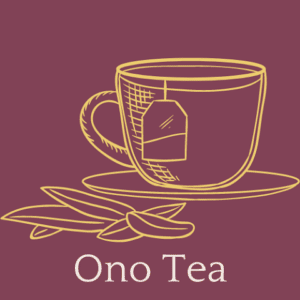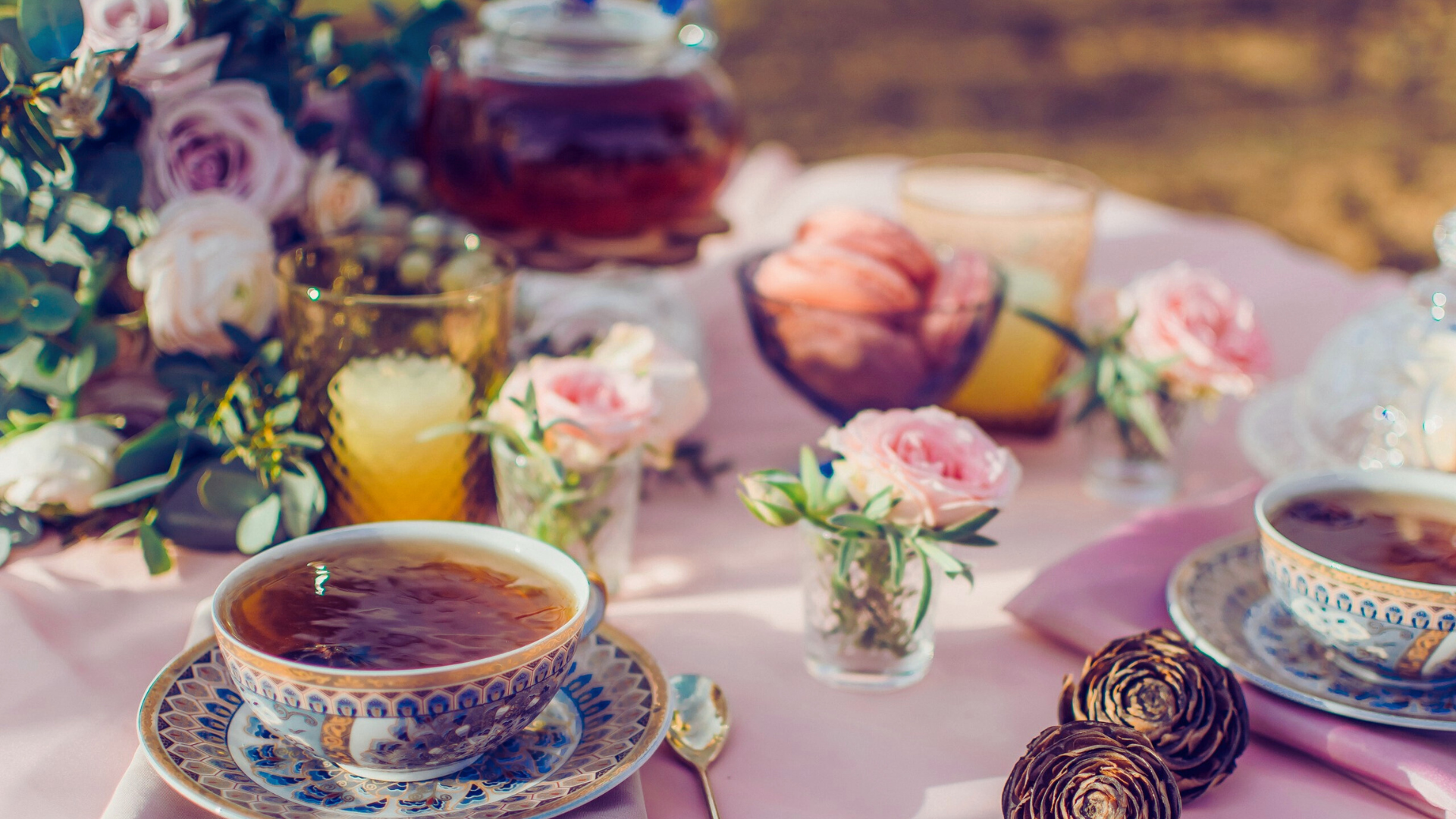Tea isn’t just a beverage—it’s an experience. For centuries, cultures around the world have sipped tea alongside meals, not just for hydration but to enhance flavors, cleanse the palate, and create harmony on the plate. Yet, while wine pairing has long been celebrated in the culinary world, tea pairing remains an underappreciated art. At Onotea.com, we believe it’s time to change that. Whether you’re a seasoned tea drinker or just starting to explore the world of loose leaves, learning how to pair tea with food like a pro can transform your dining experience. Let’s dive into the principles, techniques, and specific pairings that will make you a tea-pairing maestro.
Why Pair Tea with Food?
Before we get into the how, let’s talk about the why. Tea offers a versatility that few beverages can match. With its wide range of flavors—from earthy and robust to floral and delicate—tea can complement, contrast, or even elevate the taste of food. Unlike wine, which often dominates with its alcohol content, tea is subtle yet complex, making it an ideal partner for everything from savory dishes to desserts. Plus, it’s alcohol-free, caffeine levels can be adjusted based on the type, and it’s packed with antioxidants. What’s not to love?
The goal of pairing tea with food is simple: create a synergy where both the tea and the dish shine. A well-chosen tea can cut through richness, enhance subtle flavors, or provide a refreshing counterpoint to spice. Ready to master this? Let’s break it down.
The Basics of Tea Pairing
Pairing tea with food isn’t about rigid rules—it’s about understanding flavors and how they interact. Here are the foundational principles to guide you:
- Match Intensity: Light teas pair best with delicate foods, while bold teas stand up to hearty, rich dishes. A subtle white tea won’t hold its own against a spicy curry, but a robust Assam black tea will.
- Complement or Contrast: You can either enhance similar flavors (like pairing a nutty oolong with roasted vegetables) or create a contrast (like a crisp green tea with creamy cheese).
- Consider the Finish: Tea has a lingering aftertaste—think astringency, sweetness, or bitterness. Match this to the food’s finish for a seamless experience.
- Temperature Matters: Hot tea can intensify flavors, while iced tea can refresh and cool the palate. Choose based on the dish and the mood.
With these in mind, let’s explore how different tea types pair with various foods.
Black Tea: The Bold Companion
Black tea, with its full-bodied, often malty or smoky profile, is the workhorse of tea pairing. It’s oxidized fully, giving it strength and depth that can handle rich, savory foods.
- Breakfast Classics: A classic Darjeeling or Assam pairs beautifully with a hearty English breakfast—think bacon, eggs, and sausages. The tea’s slight astringency cuts through the fat, balancing each bite. Add a splash of milk if you want a creamier match for buttered toast.
- Grilled Meats: Smoky Lapsang Souchong is a revelation with grilled steak or barbecue ribs. Its campfire-like notes echo the char while taming the richness.
- Chocolate Desserts: Pair a bold Keemun or Ceylon with dark chocolate cake. The tea’s subtle sweetness and robust backbone enhance the cocoa without overwhelming it.
Pro Tip: Steer clear of overly delicate dishes with black tea—it can overpower them. Save your sushi for something lighter.
Green Tea: The Fresh and Vibrant Partner
Green tea’s grassy, vegetal, and sometimes nutty flavors make it a natural match for lighter fare. It’s less oxidized than black tea, preserving its freshness and brightness.
- Seafood: Japanese Sencha or Gyokuro is a classic with sushi or grilled fish. The tea’s umami notes amplify the seafood’s natural flavors, while its crisp finish cleanses the palate between bites.
- Salads and Veggies: A light Dragonwell (Longjing) complements a fresh green salad or steamed asparagus. Its nutty undertones play well with olive oil or light vinaigrettes.
- Cheese: Surprisingly, green tea loves soft cheeses like brie or camembert. The tea’s slight bitterness contrasts the creaminess, creating a dynamic duo.
Pro Tip: Avoid pairing green tea with heavy, greasy foods—the delicate flavors will get lost.
Oolong Tea: The Versatile Middle Ground
Oolong sits between black and green tea in oxidation, offering a spectrum from floral and light to dark and roasted. This versatility makes it a pairing superstar.
- Roasted Dishes: A toasty Tie Guan Yin (Iron Goddess) is heavenly with roasted chicken or root vegetables. The tea’s caramel-like notes enhance the caramelization of the roast.
- Spicy Foods: A floral Baozhong oolong tames the heat of spicy Thai or Szechuan dishes. Its smooth, sweet profile soothes the palate without dulling the spice.
- Fruit Desserts: Pair a lightly oxidized oolong with a fruit tart or peach cobbler. The tea’s subtle florals elevate the fruit’s natural sweetness.
Pro Tip: Match the oolong’s oxidation level to the dish—lighter oolongs for delicate foods, darker ones for richer plates.
White Tea: The Delicate Sophisticate
White tea, minimally processed and often floral or grassy, is the lightest of the bunch. It’s best for subtle, refined pairings.
- Light Pastries: A Silver Needle white tea with croissants or shortbread is pure elegance. Its gentle sweetness enhances the buttery notes without overpowering.
- Fresh Fruit: Pair Bai Mu Dan (White Peony) with melon or berries. The tea’s soft floral hints amplify the fruit’s freshness.
- Mild Seafood: Steamed shrimp or scallops with white tea is a delicate dance of flavors—neither overwhelms the other.
Pro Tip: Keep white tea away from bold or spicy foods—it’s too subtle to compete.
Herbal Tea: The Wild Card
Herbal teas (technically tisanes, since they’re not from the tea plant) bring fruit, spice, and herb flavors to the table. They’re caffeine-free and endlessly customizable.
- Spicy Cuisine: Peppermint tea cools down fiery Mexican or Indian dishes. Its menthol freshness resets your taste buds.
- Comfort Foods: Chamomile with oatmeal or creamy soups is cozy and calming, enhancing the dish’s warmth.
- Desserts: Hibiscus tea’s tart, cranberry-like flavor pairs wonderfully with cheesecake or lemon bars, cutting through the richness.
Pro Tip: Experiment boldly—herbal teas are forgiving and fun to play with.
Pu-erh Tea: The Earthy Maverick
Pu-erh, a fermented tea from China, has a deep, earthy taste that’s unlike any other. It’s a niche choice but a game-changer when paired right.
- Rich Stews: A ripe (shou) pu-erh with beef stew or mushroom risotto is divine. Its woodsy depth mirrors the dish’s heartiness.
- Aged Cheese: Try a raw (sheng) pu-erh with sharp cheddar or gouda. The tea’s complexity stands up to the cheese’s intensity.
- Dark Chocolate: Pu-erh and a 70% cacao bar are a match made in heaven—the tea’s earthiness grounds the chocolate’s bitterness.
Pro Tip: Pu-erh’s strong personality needs equally bold partners—save it for intense flavors.
Practical Tips for Pairing Like a Pro
Now that you’ve got the pairings, here’s how to execute them flawlessly:
- Taste the Tea First: Sip your tea solo to understand its flavor profile before pairing. Is it bitter, sweet, floral, or smoky? This sets your baseline.
- Start Small: Experiment with small bites and sips to find what works. Adjust as you go—tea pairing is an art, not a science.
- Brew Properly: Over-steeping can make tea too bitter, while under-steeping dulls its flavor. Follow brewing guidelines for each type (e.g., 1-2 minutes for green, 3-5 for black).
- Cleanse Between Pairings: If testing multiple teas, sip water or nibble plain bread to reset your palate.
- Trust Your Taste: Rules are a starting point—your preferences matter most. If it tastes good to you, it’s a win.
Sample Tea Pairing Menu
Want to impress at your next dinner party? Here’s a sample menu with tea pairings:
- Appetizer: Steamed shrimp dumplings with Silver Needle white tea
- Main Course: Grilled salmon with roasted vegetables and Sencha green tea
- Side: Spicy mango salad with Baozhong oolong
- Dessert: Dark chocolate mousse with Keemun black tea
This progression moves from light to bold, with each tea enhancing the dish while refreshing the palate for the next course.
Common Mistakes to Avoid
Even pros slip up sometimes. Here’s what to watch out for:
- Overpowering the Food: A strong tea with a delicate dish (like Lapsang Souchong with sushi) drowns out the flavors.
- Ignoring Temperature: Iced tea with hot soup can clash—keep temps in sync.
- Skipping Seasonality: A heavy pu-erh in summer feels off; opt for lighter teas when it’s warm out.
The Joy of Exploration
Pairing tea with food is as much about discovery as it is about technique. Every tea has a story, and every dish has a personality—your job is to play matchmaker. Start with the suggestions here, but don’t be afraid to break the mold. Maybe you’ll find that chamomile loves your grandma’s meatloaf or that matcha elevates your morning smoothie bowl. The possibilities are endless.
At Onotea.com, we’re all about celebrating tea’s potential. So grab your favorite brew, plate up something delicious, and start experimenting. With a little practice, you’ll be pairing tea like a pro—and impressing everyone at the table. What’s your first pairing going to be? Let us know—we’d love to hear your tea tales!
Sources
- The Tea Association of the USA
– For insights on tea’s role in modern cuisine.
- Cup & Kettle Tea
– For traditional Japanese tea pairing wisdom.
- Tea Sparrow
– For practical brewing and pairing tips from tea enthusiasts.

